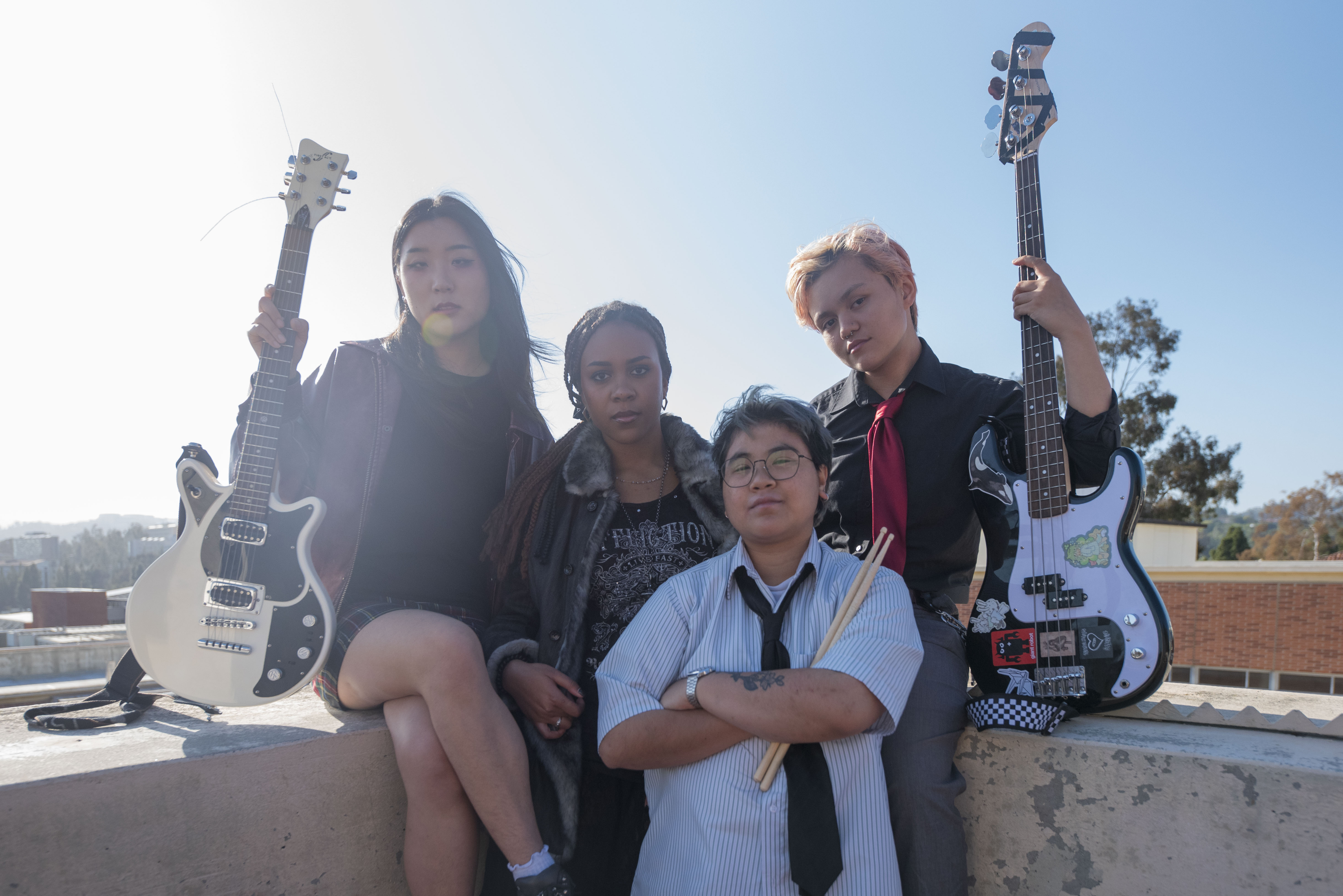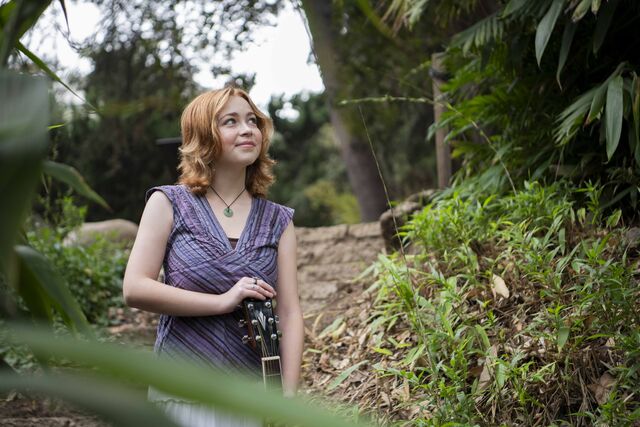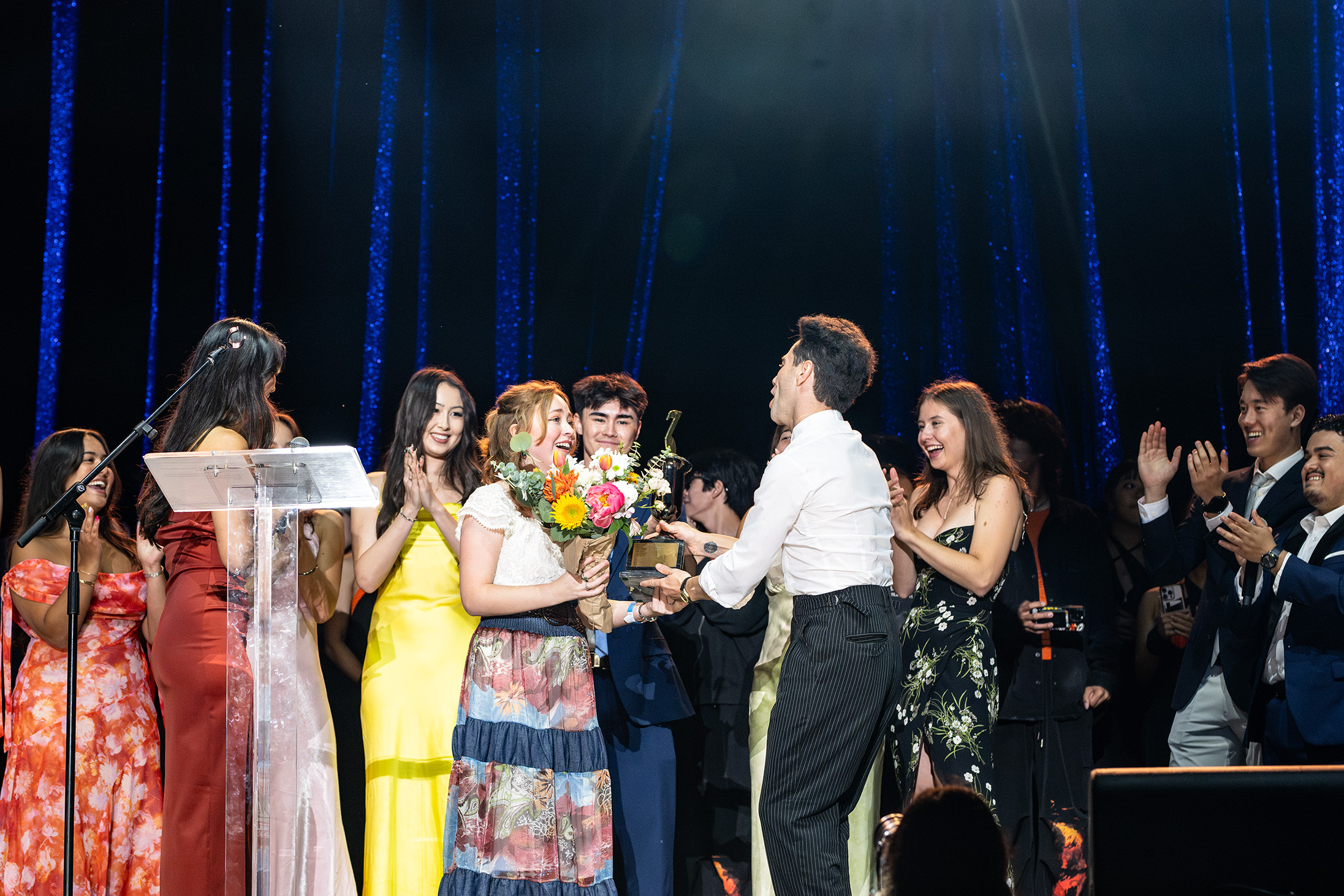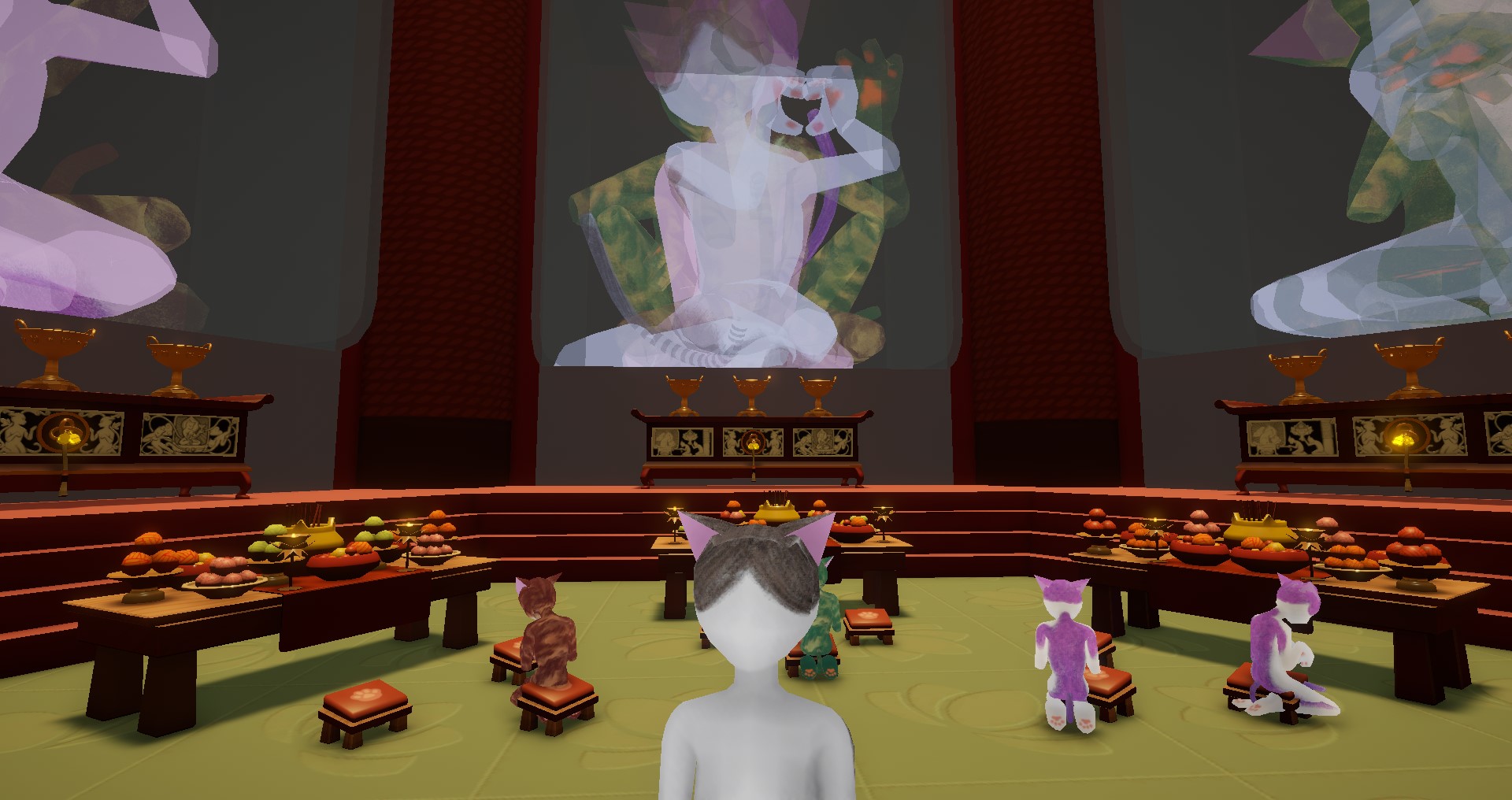Ella Rhodes transfuses queerness with ’80s punk in ‘Hickeys’
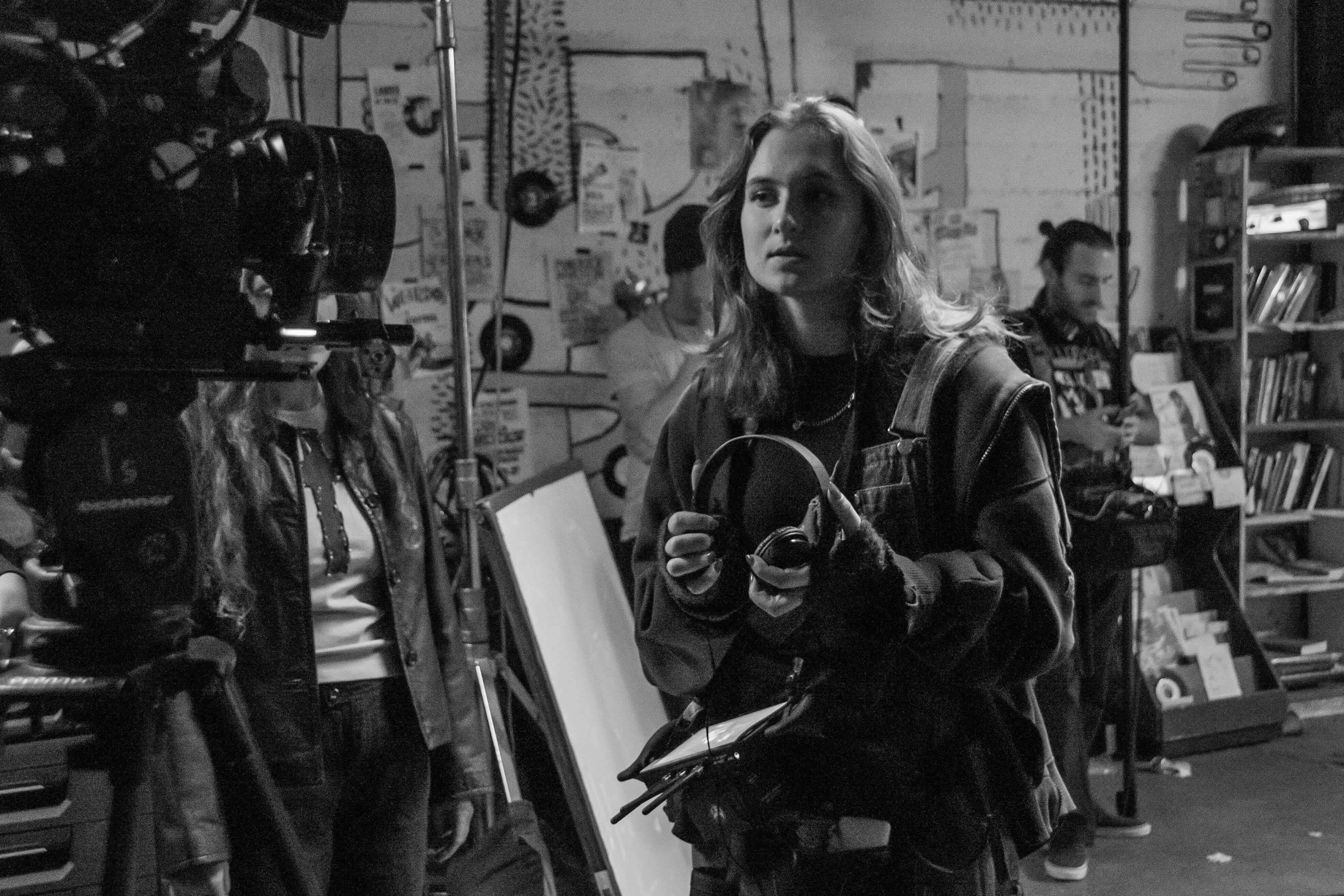
Pictured is Ella Christiansen, also known as Ella Rhodes, on the set of her student thesis film “Hickeys.” The fourth-year film and television student will screen her film at the UCLA School of Theater, Film and Television Undergraduate Showcase on June 8. (Courtesy of Ella Christiansen)
By Gwendolyn Lopez
May 20, 2025 10:32 p.m.
Ella Rhodes is sinking her teeth into queer vampire punk in “Hickeys.”
The 12-minute thesis film, which will be screened at the UCLA School of Theater, Film and Television Undergraduate Showcase on June 8, follows Vivian, a queer Nashville runaway who finds belonging in the 1983 Los Angeles hardcore punk scene – only to realize her close friends are actually manipulative vampires. Rhodes, the directing name of fourth-year film and television student Ella Christiansen, said “Hickeys” was inspired by her experiences overcoming heartbreak and anger, as well as by her love for 1970s horror revenge films.
“I love abrasive art in all forms, from punk and metal music to scary movies,” Christiansen said. “I think that art that makes you viscerally feel something is the epitome of the human experience.”
Christiansen said for her, horror films are an outlet for expressing the intensity of her emotions. When she wrote the character of Vivian, Christiansen added that she wanted to encapsulate profound feelings of isolation by emphasizing the protagonist’s flawed qualities. As someone feeling ostracized for her queerness, Vivian is drawn to the punk scene that welcomes all outsiders – yet, by the film’s end, Christiansen said Vivian remains as greedy and hateful as her vampire friends. She added that this portrayal of harmful relationships acts as a warning fable of the dangers of hate.
Christiansen said she approached “Hickeys” from a research-oriented perspective by working with the Library Special Collections Punk Archive in the Charles E. Young Research Library in addition to the support she received from the UCLA/Keck Humanistic Inquiry Undergraduate Research Awards. Alongside her production designers, Christiansen said she strove to include period-accurate costumes, accessories and flyers from the archive. She said the time, money and resources she received from UCLA allowed her to shoot “Hickeys” using celluloid film at The Smell – a DIY punk venue in Downtown Los Angeles.
Natalie Ruiz Varela, a third-year film and television student producer for “Hickeys,” said the making of the film was very art-heavy, requiring extras, special effects and stunts. Ruiz Varela, who first met Christiansen while producing on a prior set, said she learned about producing from watching Christiansen work. Despite facing hurdles to execute the complex vision of “Hickeys,” Ruiz Varela said she felt safe and supported in the environment Christiansen curated on set.
“I remember when I started to tell people that I was producing this, they just didn’t think we could pull it off, or they would think we would have to cut something in the script before we even got to location – but everything’s in there,” Ruiz Varela said.
Third-year film and television student and first assistant director Rachana Aithal said filming “Hickeys” at The Smell allowed for the film to encapsulate the history behind the location, citing bathroom walls with years of handwritten messages as an example. Aithal added that under the visionary direction of Christiansen, the team was able to accomplish all of its ambitious goals.
In addition to the teachers and mentors who supported her film journey, Christiansen said she is grateful for all the people who helped with the making of “Hickeys.” She added that she decided to handwrite the film credits in order to express her personal connection to everyone involved with the film – from the main cast to the extras and everyone who worked behind the scenes.
“It felt like a community-led piece of art in the same way that a lot of early punk music was community-led,” Christiansen said.
Christiansen said she also worked with members from punk band Lady Vengeance to ensure “Hickeys” was more music-forward than its reference films. She added that the soundtrack for “Hickeys” contains dissonant sonic elements relying exclusively on electric guitar, unlike other punk horror films that incorporate instruments like violin or drums.
Despite its focus on anger and hatred, Christiansen said she strived to incorporate quiet moments of vulnerability into “Hickeys” as well. Believing that punk rock is an extension of poetry, Christiansen said she added elements of pensive meditation alongside intense emotion, which she accomplished in the film by minimizing the number of cuts – allowing the audience to move in real time with the characters in a realistic way.
Christiansen said she had been attending punk shows since she was 14, frequently seeing artists that her father loved when he was her age. The decision to set “Hickeys” in the ‘80s was second nature, she said – both as a way to connect with her parents and to embrace her familiarity with the time period. In this way, “Hickeys” aims to spark a conversation between film and music, she added.
“I think intertextuality is one of the most interesting parts about being a person,” Christiansen said. “The way that we consume art and media and the questions we form with that create the communities that we live in now.”


